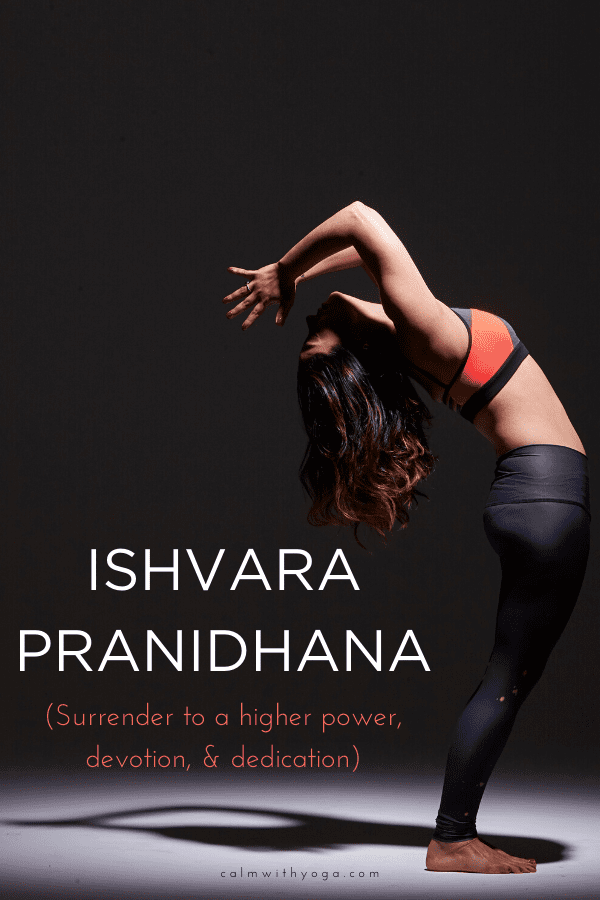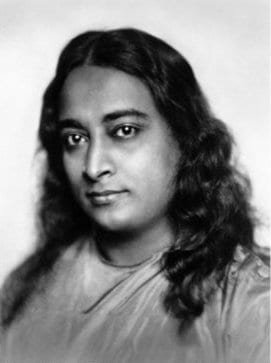Yoga practice is like an obstacle race; many obstructions are purposely put on the way for us to pass through.
They are there to make us understand and express our own capacities.
We all have that strength, but we don’t seem to know it.
We seem to need to be challenged and tested in order to understand our own capacities.
– Swami Satchidananda, yogic teacher & translator/ commentator of the Yoga Sutras of Patanjali
Physical and emotional pain, challenges, and discomfort are a non-negotiable part of life.
We can’t run away from them or eradicate them, but we can learn how to live with them more gracefully.
We can learn to better coexist with our pain and challenges thanks to the path of kriya yoga.
‘Kriya’ means ‘action’ in Sanskrit.
Kriya yoga, therefore, means ‘yoga in action’ or ‘yoga in practice.’
We can use the practice of kriya yoga the minute we become aware of physical or mental/emotional pain and discomfort.
We can also use this yoga technique to help us face whatever challenges come our way…
Raja Yoga & Kriya Yoga: 2 Ancient Systems for Transforming Pain & Discomfort

Thousands of years ago, a sage called Patanjali created 2 systems for mental, physical, and emotional mastery to help us face our internal battles and external challenges.
He outlined both systems in the Yoga Sutras, a 1,700-year-old compilation of 196 sutras or little pearls of wisdom woven together.
The first system (commonly known as “The 8 Limbs of Yoga” or “Raja Yoga“) is comprised of 8 steps :
1 – Yamas (self-regulating behaviors)
2 – Niyamas (personal training)
3 – Asana (physical postures)
4 – Pranayama (regulation of life force and vital energy through breathing exercises)
5 – Pratyahara (turning the senses away from the external world and towards the internal world)
6 – Dharana (one-pointed focus and sustained concentration)
7 – Dhyana (meditation techniques)
8 – Samadhi (transcendence from limitations, mind-body integration)
These 8 steps lead us towards the ultimate goal in yoga:
Union with our own selves – our bodies, our minds, our hearts, our energy (life force).
Accepting pain as help for purification, self-study, and surrender to the Supreme Being constitute Yoga in practice.
– Yoga Sutra 2.1
Patanjali’s second system, Kriya Yoga, stems from the first system.
It’s based on the 8 Limbs of Yoga, specifically, the second limb called the Niyamas.
The Niyamas are five precepts for personal training:

The practice of Kriya yoga refers to the last three Niyamas: Tapas, Svadhyaya, and Ishvara Pranidhana.
1- Tapas:

Tapas means ‘to burn or create heat.’
Anything burned out will be purified…
But how can this burning process be effected with our mental impurities?
By accepting all the pain that comes to us, even though the nature of the mind is to run after pleasure.
We will actually be happy to receive pain if we keep in mind its purifying effects.
– Swami Satchidananda, yogic teacher & translator/ commentator of the Yoga Sutras of Patanjali
The root of the Sanskrit word ‘tapas’ also means:
“To glow, to shine, to change, & to transform.”
By practicing Tapas, you courageously feel the burn and allow it to transform you from the inside out.
Practicing tapas means you learn to override knee-jerk impulses to avoid pain and seek pleasure.
You learn to endure pain, discomfort, challenges, and frustration as a means of purification and transformation.
Now, this doesn’t mean you’ll override your reactions every single time.
What counts is that you keep coming back to this practice whether you override or not.
It’s by experiencing pain that we learn more about who we really are and what we’re really made of.
No doubt, practicing Tapas isn’t easy… but it can be a powerful spiritual practice that leads to deeper self-realization.
It sucks to feel pain and no one likes feeling discomfort.
And yet, pain, discomfort, and challenges can be transformers and some of our greatest teachers.
Think of the people you admire and who inspire you and study their life story – you’ll find most if not all of them have endured their fair share of physical/mental/emotional pain.
Through constant kriya practice, pain can help us become more of who we really are – which is precisely the main goal of yoga.
2- Svadhyaya:

‘Sva’ means self, and ‘adhyaya’ means study or education.
Education is the drawing out of the best that is within a person.
Svadhyaya, therefore, is the education of the self.
The person practicing svadhyaya reads his own book of life, at the same time that he writes and revises it.
– B.K.S. Iyengar, Yoga Teacher & Author of “Light on Yoga”
Svadhyaya means to educate yourself and to study/observe yourself.
Essentially Svadhyaya is the practice of self-awareness, self-inquiry, and self-reflection.
It’s only through Svadhyaya that we can peel back the layers of our being and become more aware of who we are and who we aren’t.
Then we can discard what no longer serves us and say goodbye to the old parts of us that don’t reflect our current (or future) selves.
Study of the self is needed so there can be union with the true Self (Yoga.) Share on XAccording to neuroscientist Dr. Joe Dispenza, our conscious and analytical mind only accounts for 5%, while our subconscious mind processes the remaining 95%. (1)

The practice of Svadhyaya helps us uncover this hidden information (the 95%) so we can process it with our conscious mind and present awareness.
By engaging with ourselves through neutral inquiry and genuine curiosity we can begin to disentangle ourselves from deep-seated patterns, unconscious beliefs, and blind spots.
We can step away long enough to observe ourselves, our reactions, and our unspoken emotional triggers… especially in the midst of pain, discomfort, and challenge.
The practice of Svadhyaya is like a muscle to be exerted consistently and persistently, and even more so during sh*tstorms.
It’ll be uncomfortable and it’ll be confronting because you won’t always like what you see when you study yourself.
And that’s ok.
We all go through this.
3- Ishvara Pranidhana:

The moment of surrender is not when life is over. It’s when life begins.
– Marianne Williamson, author of ‘A Return to Love’
Ishvara Pranidhana is the practice of surrender, dedication, devotion, & faith.
It’s about really embodying a deep trust in the infinite intelligence and creative wisdom of a higher power.
According to Yoga Sutra 1.24, Ishvara is the Supreme Self, “unaffected by any afflictions, actions, fruits of actions, or by any inner impressions of desire or greed.”
Ishvara Pranidhana, then, is the devotion and dedication to the full expression of this Supreme Self… of your Supreme Self.
This means that we not only trust the intelligence of a higher power but that we also trust our own innate intelligence and capacity to fully express our potential.
According to Yoga Sutras 1.27-1.28, the word expressive of this Supreme Self (Ishvara) is Om or Aum.
The vibrational sound Om/Aum is a powerful tool to use during #kriyayoga practice. Share on XThe repetition of this sound is what’s referred to as a mantra.

You can use this mantra as part of your meditation practice, keep reading to find out how.
Why should we practice Kriya Yoga?
It’s said in the Yoga Sutras that practice of kriya techniques can help to overcome the five main obstacles on the Yogic Path.
These obstacles stand in the way of us reaching the 8th Limb of Yoga – Samadhi (spiritual growth and self-realization.)
They are:

According to Patanjali, the human being that embarks on this comprehensive spiritual path of the 8 Limbs and kriya practice awakens three distinct qualities:
1- Self-understanding and insight
2- The quality of calm balance regardless of outer circumstances
3- Inner strength and resolve
Kriya Yoga According to Paramahansa Yogananda

Paramahansa Yogananda was a renowned yogic teacher who came from India to the U.S. in 1920 in order to spread the message of self-realization through yoga.
He established the Self-Realization Fellowship in Los Angeles, CA where it still remains today.
His teachings mainly centered around Kriya Yoga.
In 1946 he published the best-selling book “Autobiography of a Yogi,” where he dedicated an entire chapter to ‘the science of kriya yoga.’
The book impacted countless people throughout the years including Apple CEO Steve Jobs.
So much so that when Jobs planned every detail of his own funeral he made sure that each attendee received a copy of the book as his last message and gift. (2)
Yogananda’s kriya yoga path is not for the general public, though.
The actual technique must be learned from a kriyaban (kriya yogi) in a process of Kriya initiation.
This specific technique of kriya yoga has been passed down a lineage of teachers and students.
It’s said that in 1861 teacher Mahavatar Babaji taught the technique to his student Lahiri Mahasaya, who then taught it to his student Sri Yukteswar who taught it to his students, including Yogananda.
Kriya Yoga for Real Life:
If a river just flows easily, the water in the river does not express its power.
But once you put an obstacle to the flow by constructing a dam, then you can see its strength in the form of tremendous electrical power.
– Swami Satchidananda, yogic teacher & translator/ commentator of the Yoga Sutras of Patanjali
The constant and heartfelt practice of Kriya Yoga can not only carry us through the tough moments but helps us become stronger and more powerful because we endured such obstacles.
Whether it’s physical pain or illness you’re experiencing or mental and emotional turmoil, here are four steps to help you through it:
Step 1 – Embrace the pain/ discomfort

This doesn’t mean you don’t take any action to alleviate the pain.
It means that you accept the pain as purification and you do your best to bring awareness to it.
Can you feel grateful for this pain?
Instead of running away from it try staying with it for a while and be open to it teaching you something valuable.
Step 2 – Observe yourself & ask yourself the right questions
Can you stay with the discomfort long enough to notice it shift?
What do you observe about yourself and the way you show up?
How would you like to show up?
What can you do differently?
Step 3 – Surrender what is to the Supreme Self
Pain and discomfort don’t last forever.
This will eventually pass.
Can you surrender resistance even for just a moment?
Can you dedicate yourself to come through on the other side of this?
Step 4 – Use the tools at your disposal
Tool #1 – The Om/Aum Mantra

Chant it out loud or silently. If you don’t feel comfortable saying the actual word you can also just hum it with your mouth closed.
Studies and brain scans show that chanting Om can help to deactivate your brain’s limbic system which regulates fear and emotional responses. (3)
This is definitely a plus when you’re in pain or discomfort or facing something stressful!
Tool #2 – The Adi Mantra

You can also add the Adi Mantra to your mantra meditation practice. This mantra can help you invoke that Supreme Self within you (Ishvara) and also helps to increase intuition.
Tool #3 – Self-Realization Meditation
Use this meditation to guide you in increasing your sense of inner calm no matter what’s happening around you.
Reconnect to your essence now:
https://soundcloud.com/calmwithyoga/self-realization-meditation-dissolve-fear-anxiety-overwhelm
REFERENCES
:
(1) Dispenza, Joe, You Are the Placebo: Making Your Mind Matter, 2014
(2) https://www.inc.com/hitendra-wadhwa/steve-jobs-self-realization-yogananda.html
(3) https://www.ncbi.nlm.nih.gov/pmc/articles/PMC3099099/












